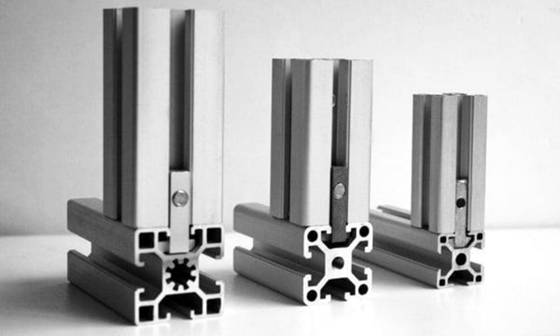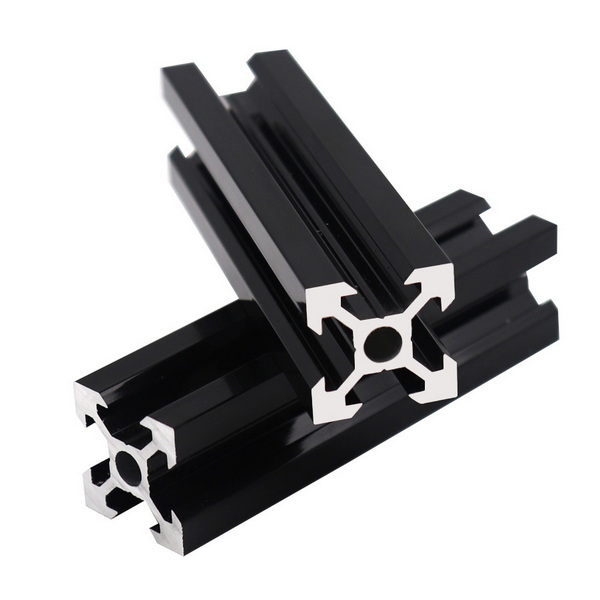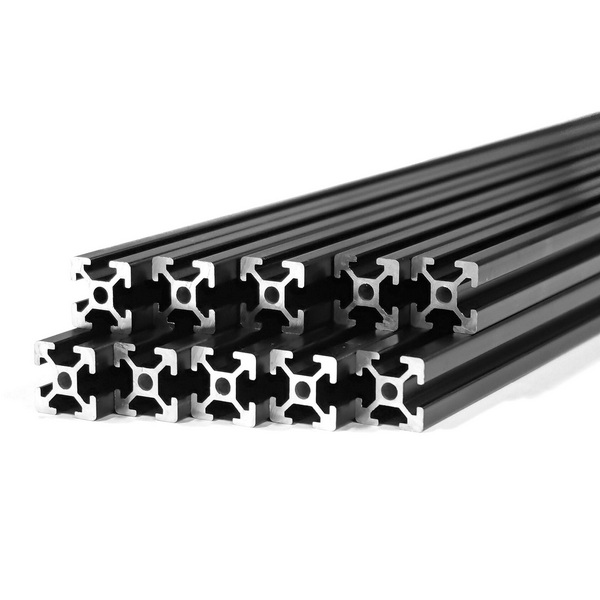Content Menu
● Understanding 1040 Aluminum Extrusion
>> Key Properties of 1040 Aluminum Extrusion
● Applications of 1040 Aluminum Extrusion
>> Construction and Architecture
>> Automotive Industry
>> Aerospace Applications
>> Electrical and Electronics
>> Furniture and Interior Design
>> Marine Applications
>> Industrial Equipment
>> Signage and Displays
>> Renewable Energy
>> Medical Equipment
● Conclusion
● Frequently Asked Questions
>> 1. What is 1040 aluminum extrusion?
>> 2. What are the benefits of using 1040 aluminum extrusion?
>> 3. In which industries is 1040 aluminum extrusion commonly used?
>> 4. How does aluminum extrusion compare to other manufacturing processes?
>> 5. Can 1040 aluminum extrusion be recycled?
Aluminum extrusion is a manufacturing process that shapes aluminum alloy into a desired cross-sectional profile. Among the various aluminum alloys available, 1040 aluminum extrusion is particularly popular due to its excellent mechanical properties, corrosion resistance, and versatility. This article explores the applications best suited for 1040 aluminum extrusion, highlighting its benefits and showcasing various industries that utilize this material.

Understanding 1040 Aluminum Extrusion
1040 aluminum is a medium-strength alloy that is primarily composed of aluminum, with small amounts of silicon, iron, copper, manganese, magnesium, and zinc. This alloy is known for its good machinability, weldability, and formability, making it an ideal choice for various applications. The extrusion process involves forcing the aluminum through a die, creating a continuous profile that can be cut to length.
Key Properties of 1040 Aluminum Extrusion
1. Strength: 1040 aluminum offers a good balance of strength and weight, making it suitable for structural applications.
2. Corrosion Resistance: The alloy exhibits excellent resistance to corrosion, which is crucial for outdoor and marine applications.
3. Machinability: 1040 aluminum can be easily machined, allowing for precise fabrication and assembly.
4. Weldability: This alloy can be welded using various techniques, making it versatile for different manufacturing processes.
5. Lightweight: Aluminum is significantly lighter than steel, which is advantageous in applications where weight reduction is essential.
Applications of 1040 Aluminum Extrusion
Construction and Architecture
One of the most significant applications of 1040 aluminum extrusion is in the construction and architectural sectors. The alloy is used to create window frames, door frames, curtain walls, and structural components. Its lightweight nature reduces the overall weight of buildings, while its strength ensures durability and stability. The aesthetic appeal of aluminum also allows architects to design modern and sleek structures that are both functional and visually appealing.
Automotive Industry
The automotive industry has increasingly adopted aluminum extrusion for manufacturing lightweight components. 1040 aluminum is used in various parts, including chassis, bumpers, and structural supports. The reduction in weight contributes to improved fuel efficiency and performance, making vehicles more environmentally friendly. Additionally, the use of aluminum helps in meeting stringent emission regulations, as lighter vehicles consume less fuel.
Aerospace Applications
In the aerospace sector, weight reduction is critical for enhancing fuel efficiency and performance. 1040 aluminum extrusion is used in aircraft components, including frames, wing structures, and fuselage sections. The alloy's strength-to-weight ratio makes it an ideal choice for aerospace applications. Furthermore, the corrosion resistance of aluminum ensures that aircraft components can withstand harsh environmental conditions, contributing to safety and longevity.
Electrical and Electronics
1040 aluminum extrusion is widely used in the electrical and electronics industry for manufacturing heat sinks, enclosures, and structural components. The alloy's excellent thermal conductivity helps dissipate heat effectively, ensuring the longevity and reliability of electronic devices. Additionally, aluminum's non-magnetic properties make it suitable for applications where electromagnetic interference must be minimized.

Furniture and Interior Design
In the furniture industry, 1040 aluminum extrusion is used to create modern and stylish furniture pieces. The alloy's versatility allows designers to craft unique shapes and profiles, resulting in aesthetically pleasing and functional furniture. Common applications include table frames, shelving units, and decorative elements. The lightweight nature of aluminum also makes it easy to move and rearrange furniture, enhancing its practicality in various settings.
Marine Applications
The marine industry benefits from the corrosion resistance of 1040 aluminum extrusion. It is used in boat frames, railings, and other components exposed to harsh marine environments. The lightweight nature of aluminum also enhances the performance of watercraft, allowing for faster speeds and improved fuel efficiency. Additionally, aluminum's resistance to saltwater corrosion ensures that marine structures remain durable over time.
Industrial Equipment
1040 aluminum extrusion is commonly used in the manufacturing of industrial equipment, including conveyor systems, machine frames, and workstations. The alloy's strength and lightweight properties make it suitable for various industrial applications, enhancing efficiency and productivity. The ability to customize aluminum extrusions allows manufacturers to create equipment tailored to specific operational needs.
Signage and Displays
In the signage industry, 1040 aluminum extrusion is used to create durable and lightweight sign frames and display structures. The alloy's ability to be easily machined and finished allows for custom designs that meet specific branding requirements. Aluminum signage is not only visually appealing but also resistant to fading and weathering, ensuring that signs remain vibrant and legible over time.
Renewable Energy
The renewable energy sector utilizes 1040 aluminum extrusion in solar panel frames and mounting systems. The lightweight and corrosion-resistant properties of aluminum make it an ideal choice for outdoor applications, ensuring the longevity of solar installations. Additionally, aluminum's recyclability aligns with the sustainability goals of the renewable energy industry, making it a preferred material for eco-friendly projects.
Medical Equipment
In the medical field, 1040 aluminum extrusion is used to manufacture various medical devices and equipment. Its lightweight and corrosion-resistant properties are essential for ensuring the safety and reliability of medical instruments. Applications include surgical instruments, diagnostic equipment, and hospital furniture. The ability to customize aluminum extrusions allows for the creation of specialized medical devices that meet stringent regulatory standards.
Conclusion
1040 aluminum extrusion is a versatile material with a wide range of applications across various industries. Its unique properties, including strength, corrosion resistance, and lightweight nature, make it an ideal choice for construction, automotive, aerospace, electronics, furniture, marine, industrial, signage, renewable energy, and medical applications. As industries continue to seek lightweight and durable materials, the demand for 1040 aluminum extrusion is expected to grow.

Frequently Asked Questions
1. What is 1040 aluminum extrusion?
- 1040 aluminum extrusion is a medium-strength aluminum alloy used in various applications due to its excellent mechanical properties and corrosion resistance.
2. What are the benefits of using 1040 aluminum extrusion?
- The benefits include lightweight, strength, corrosion resistance, machinability, and weldability, making it suitable for diverse applications.
3. In which industries is 1040 aluminum extrusion commonly used?
- It is commonly used in construction, automotive, aerospace, electronics, furniture, marine, industrial equipment, signage, renewable energy, and medical applications.
4. How does aluminum extrusion compare to other manufacturing processes?
- Aluminum extrusion allows for the creation of complex shapes and profiles with minimal waste, making it a cost-effective and efficient manufacturing process.
5. Can 1040 aluminum extrusion be recycled?
- Yes, aluminum is highly recyclable, and 1040 aluminum extrusion can be recycled without losing its properties, making it an environmentally friendly choice.






















